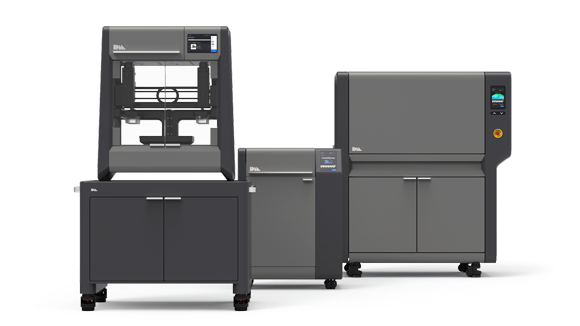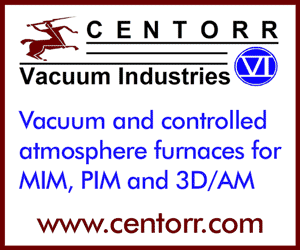John Zink reports positive results with Desktop Metal Studio System
July 18, 2020

John Zink Hamworthy Combustion, a developer of emissions control and clean-air solutions based in Tulsa, Oklahoma, USA, and part of Koch Industries, Inc, headquartered in Wichita, Kansas, USA, recently adopted the Desktop Metal Studio System to additively manufacture parts that are engineered-to-order and optimised for each customer’s application.
After several months of working with the Studio System, a Material Extrusion (MEX)-based metal Additive Manufacturing machine said to be the world’s first office-friendly metal AM machine for rapid prototyping and low-volume production, the company reports that since adopting Desktop Metal’s AM technology, it has observed the following positive results:
- Quick turnaround of aftermarket replacement parts
- The ability to test different iterations of prototype designs faster
- Eliminated need for casting tooling, saving both time and money because parts can now be additively manufactured in-house
- Freedom to create part designs that cannot be manufactured by traditional methods, only by AM
“Our primary goal at John Zink is to custom-engineer new systems that eliminate waste so our customers can operate safely and efficiently,” stated Jason Harjo, Design Manager, John Zink.
“Additive Manufacturing rewrites the book on what is possible from a design standpoint, and working with Desktop Metal allows us a very low-cost entry point into the technology,” he added. “The versatility of the Studio System has enabled our engineers and designers to find both applications for the technology as well as design and performance benefits we hadn’t even considered.”
John Zink offered several examples of parts where the adoption of metal Additive Manufacturing has proven beneficial:
Fuel atomiser – cost savings 75%, time savings 37%
Using atomisers to improve the fuel-air mix inside burners onboard ships is a simple way John Zink helps customers minimise their environmental footprint.
By using the Studio System, the company’s designers and engineers were able to prototype and test a variety of options before creating a new design featuring airfoil-like fins. The geometric freedom of Additive Manufacturing allowed them to reconsider the shape of the holes – instead of drilling round holes, the part is built with flat openings to improve atomisation and increase burner efficiency.
Where the previous design was able to reduce fuel use to 120 kg per hour, the new design cut fuel use to just 38 kg per hour. With three burners per ship, the environmental impact across an entire fleet is significant.
Cost-savings can be equally significant, as per ship, the new atomiser could save companies between $90,000 and $160,000 in fuel costs annually. The additively manufactured atomisercan be produced in a few days for less than half the cost of a traditionally manufactured fuel atomiser.
YE-6 burner tip – cost savings 72%
A key component in the efficient operation of industrial burners, burner tips are used to control the injection of fuel into the combustion chamber, or as atomisers, mixing fuel with an atomising medium like steam to increase burner efficiency.
This burner tip – originally cast and post-processed via CNC machining – was first manufactured thirty years ago, and the tooling used to produce it is no longer available. Because the part is too complex to machine as a single component, manufacturing spare parts using traditional techniques would require large investments in both time and money.
Instead, John Zink explained that its engineers used the original engineering drawings to model the burner tip and additively manufactured it using the Studio System.
The finished part was produced in just weeks, as opposed to months, and cost significantly less than a cast part.
Laser gas nozzle
A useful tool found in many machine shops, laser cutters can make precise cuts in a variety of materials. The challenge for John Zink engineers when producing this tool was that the cutter’s nozzle could become clogged or slag could build up on the edges of cut parts, requiring labour-intensive post-processing.
The company’s engineers designed and additively manufactured a new nozzle on the Studio System that incorporates a series of internal channels to direct high-pressure nitrogen gas across the cuts and blow away slag, preventing clogs and ensuring cleaner cuts. The complex geometry of the new nozzle could only have been made using AM, states the company, and was additively manufactured in metal after an earlier version, which was produced from PLA, melted at higher temperatures.
Machine tool handles
Additive Manufacturing has helped John Zink engineers recreate legacy parts and redesign existing parts, as well as helping them to find creative solutions that improve how they manufacture them. Designed by a machinist with three decades of experience at John Zink, these handles were created to make it easier to lift and place heavy tools in a lathe, and were additively manufactured in metal using the Studio System after the initial parts, which were additively manufactured in plastic, broke.
The handles were additively manufactured rather than machined to minimise waste, as if machined each handle would have to be made from a relatively large piece of metal, and to leave the company’s machine shop capacity free for customer jobs.
Safety shutoff yoke and handles
Shutoff yokes and handles are a key piece of safety equipment that is installed on the USS Blue Ridge (LCC-19). Because no tooling exists for thesepart, creating them via Additive Manufacturing was the most time- and cost-effective option for manufacturing.
Customers are said to have benefited from less downtime, as the additively manufactured parts can be delivered and installed in days rather than weeks or months.
“By eliminating the need for hard tooling with the Studio System, John Zink engineers have been able to produce innovative new parts, reproduce parts for which tooling no longer exists and find creative solutions to improving their workflow,” reported Jonah Myerberg, CTO of Desktop Metal. “As a result, their team has been able to significantly speed up the design, manufacture and deployment of parts, while saving money and delivering parts faster to customers.”
















